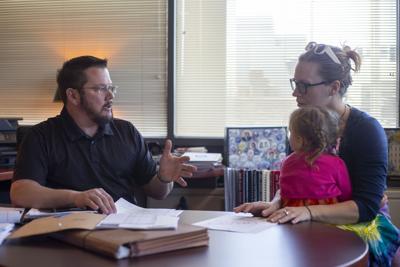A proposed Lower Valley hospital district that failed in a public vote last August on what amounted to a technicality has a decent chance of passing this November — thanks in large part to that same technicality.
It’s a simple state rule that requires enough voter turnout to guard against a handful of people making significant decisions that will affect the whole population.
While propositions like this one need only a simple majority of votes to pass, state rules also set a turnout requirement — 40% of the total number of votes cast within the district in the most recent general election. Last August, 66% of voters favored the hospital plan, but the total number of participants in the election (2,642) fell 160 shy of the state’s requirement.
With a high-stakes general election like the one shaping up this fall, however, turnout should be much higher than it was in August. That factor, combined with the baseline from the November 2023 turnout of barely 25%, means the hospital district could win approval if maybe 1,200 or so people vote, according to Yakima County Auditor Charles Ross’ math.
So backers of the hospital district proposal have good reason for optimism as they circulate petitions and campaign for their cause.
And as we said last year, it’s a cause that’s well worth voter support in the areas it would serve — all of the Lower Valley, including the entire Yakima Reservation, but not Sunnyside, Grandview, West Granger or Mabton.
Now, as we did then, we believe the proposed hospital district is a realistic means of addressing some of the Lower Valley’s most pressing health care issues. It’s a local solution that puts the public in the driver’s seat at every turn.
If voters approve such a district, they’d have five locally elected commissioners to oversee it.
The basic mission of the district would be to bring the community together to prioritize health care needs and develop acceptable strategies for addressing them.
Yes, that might mean slightly higher property taxes at some point, but only if they’re approved by voters in subsequent elections. Like the rules for voting, state requirements for running a hospital district are straightforward and strict — and one of those rules is that any new tax must have voters’ consent.
Considering what people living with the proposed district are already paying to seek care, a few more taxes might end up being a pretty good tradeoff.
The initial motivation for all this, remember, began a few weeks after Astria Toppenish Hospital closed its Family Maternity Center. That was in December of 2022, and it meant many Lower Valley families suddenly had to travel long distances to get to health care providers, perhaps putting mothers’ or their babies’ health at risk.
Forming a locally controlled hospital district, of course, won’t guarantee anyone better or more accessible care. But it at least makes addressing the community’s health needs somebody’s top priority.
And establishing a publicly controlled hospital district would help the Lower Valley take control of its own destiny — which seems like a prudent move here.




